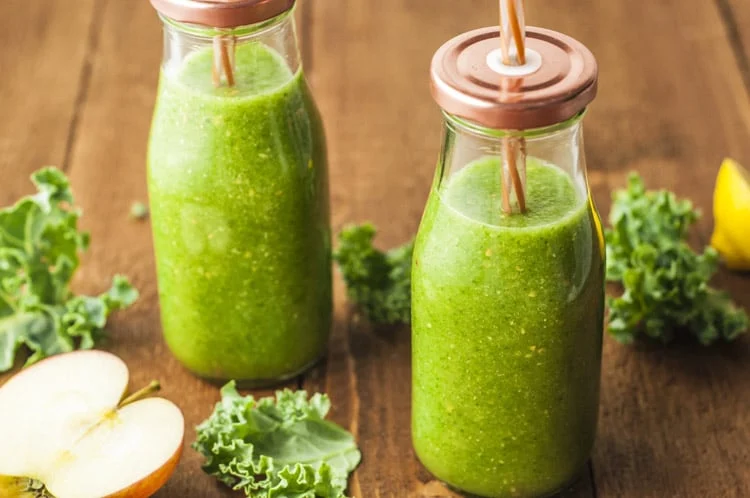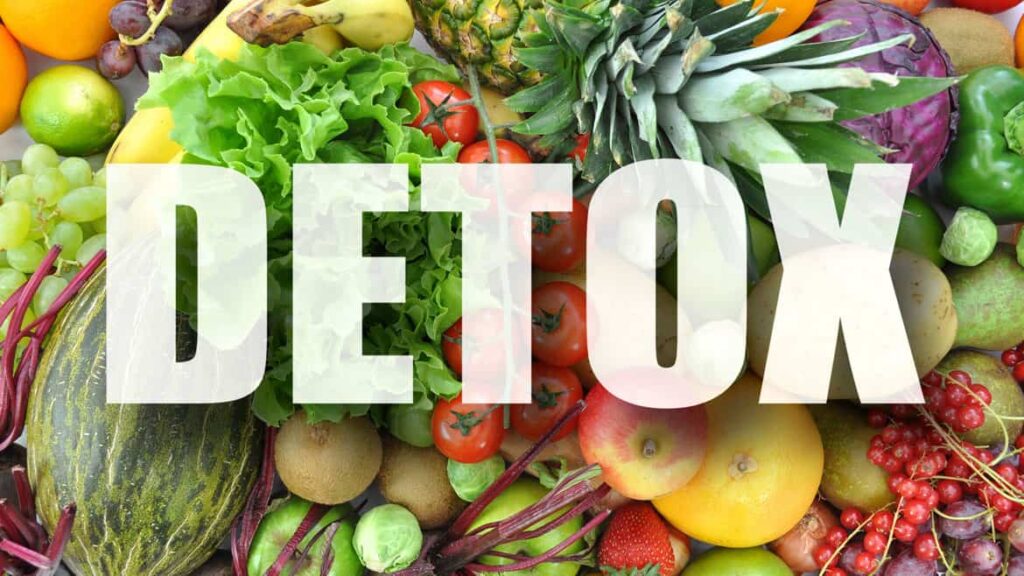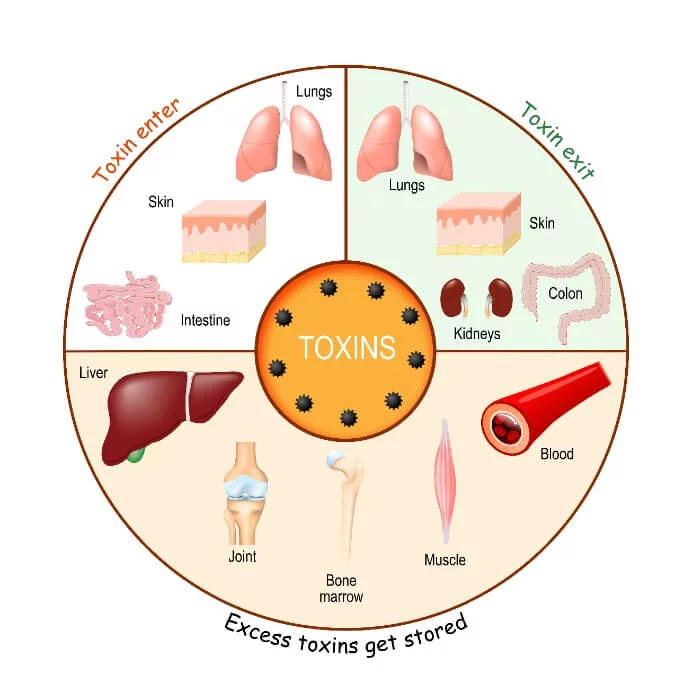Detoxification and downsizing have become buzzwords in the health and wellness community, often touted as the keys to a healthier, happier, and slimmer life. But what do these terms really mean, and how can they work together to benefit your overall well-being? This article will explore the science behind detoxification, debunk common myths, and illustrate how combining detox with downsizing can lead to significant health benefits.
Table of Contents
Understanding Detoxification
How Detoxification Works
- Liver: The liver is the central hub of the body’s detoxification system. It filters the blood to remove large toxins, synthesizes and secretes bile full of cholesterol and other fat-soluble toxins, and enzymatically disassembles unwanted chemicals.
- Kidneys: The kidneys continuously filter your blood, removing waste and excess substances through urine. They are key in removing toxins and maintaining a healthy balance of water, salts, and minerals.
- Intestines: The intestines eliminate waste and some toxins through bowel movements. A healthy gut microbiome is crucial for this process, as it helps break down toxins and prevents them from being absorbed into the blood.
- Lungs: The lungs play a vital role in expelling carbon dioxide, a natural waste product of the body’s metabolism, along with other airborne pollutants we inhale.
- Lymphatic System: This network of tissues and organs helps rid the body of toxins, waste, and other unwanted materials. It transports lymph, a fluid containing white blood cells and waste products, back into the bloodstream.
- Skin: The skin eliminates toxins through sweat and supports the removal of substances that can be excreted through the pores.
Natural Ways to Support Detoxification
Supporting your body’s natural detoxification process doesn’t require drastic diets or interventions. Instead, it involves adopting healthy lifestyle practices:
- Hydration: Drinking enough water is essential for facilitating the elimination of waste products through the urine.
- Diet: Consuming a diet rich in fruits, vegetables, lean proteins, and whole grains provides the nutrients necessary for detoxification processes. Foods high in antioxidants and fiber are particularly beneficial.
- Exercise: Regular physical activity increases blood circulation and lymphatic flow, helping to mobilize toxins for elimination.
- Sleep: Quality sleep is necessary for the body to repair and detoxify itself. Ensure you’re getting adequate rest nightly.
- Reducing Exposure to Toxins: Minimizing the use of chemical-based household cleaners, personal care products, and processed foods can reduce the burden of toxins your body needs to process.
The Importance of Detoxification
Detoxification is crucial for maintaining good health and preventing disease. It supports the body’s immune system, aids in weight management, improves skin quality, and enhances overall energy levels. A buildup of toxins can lead to various health issues, including chronic fatigue, headaches, muscle pain, and skin problems.

Debunking Detox Myths
Myth 1: You Need Expensive Supplements and Teas to Detox
One of the most pervasive myths is that detoxification requires specific, often costly, supplements, teas, or other products. The truth is, your body is naturally equipped with a complex system designed to detoxify itself. The liver, kidneys, intestines, lungs, lymphatic system, and skin all work together to remove toxins without the need for expensive interventions. A well-balanced diet, rich in fruits, vegetables, and whole foods, is typically sufficient to support these natural processes.
Myth 2: Detox Diets Can Compensate for Unhealthy Lifestyle Choices
Another common belief is that following a detox diet can undo the effects of poor lifestyle choices, such as smoking, excessive alcohol consumption, or a diet high in processed foods. While certain dietary changes can enhance the body’s natural detoxification abilities, they cannot completely counteract the long-term effects of unhealthy habits. The best approach is a consistent, balanced lifestyle that includes healthy eating, regular physical activity, adequate hydration, and sufficient sleep.
Myth 3: Detoxing Leads to Dramatic Weight Loss
Many people turn to detox diets in hopes of rapid weight loss. While some may experience short-term weight loss, largely due to reduced calorie intake and loss of water weight, these effects are typically not sustainable. Real, long-lasting weight loss requires long-term changes to diet and exercise habits. Moreover, extreme detox diets can sometimes lead to muscle loss, further slowing down metabolism.
Myth 4: More Frequent Detoxes Are Better
The idea that the body needs to be detoxed regularly to stay healthy is misleading. Overdoing it with frequent detoxes or cleanses can actually be harmful, potentially leading to nutritional deficiencies and other health issues. Supporting your body’s natural detoxification systems through a balanced diet and healthy lifestyle is generally sufficient for most people.
Myth 5: Detoxes Are Necessary for Everyone
Detoxification needs can vary greatly from person to person, depending on factors like diet, lifestyle, and environmental exposure. While some individuals may benefit from dietary adjustments to support detoxification, others may not need any intervention beyond what their body naturally does. It’s also important to consult with a healthcare professional before starting any detox regimen, especially for individuals with underlying health conditions.

The Importance of Downsizing
Mental Clarity and Reduced Stress
One of the most immediate benefits of downsizing is the reduction of stress and anxiety. Cluttered spaces can overwhelm the mind, creating a sense of chaos and distraction. By minimizing possessions and organizing living spaces, individuals can experience a significant decrease in mental clutter. This decluttering process fosters a calming environment, enabling better focus, decision-making, and creativity. Furthermore, the act of downsizing can instill a sense of control and accomplishment, contributing to improved mental health.
Enhanced Physical Health
Downsizing can also have a positive impact on physical health. A clutter-free environment is easier to clean and maintain, reducing the likelihood of dust, mold, and other allergens that can affect health. Additionally, the process of downsizing often involves physical activity, from sorting through items to organizing and cleaning, which can contribute to physical fitness. Moreover, a decluttered space can encourage a more active lifestyle by making physical activities, such as exercising at home, more appealing and accessible.
Financial Benefits
Reducing the amount of possessions and opting for a smaller living space can lead to substantial financial savings. Less space typically means lower rent or mortgage payments, utility bills, maintenance costs, and property taxes. The act of downsizing can also involve selling unwanted items, providing an immediate financial boost. Over time, a minimalist approach to possessions can curb unnecessary spending, encouraging more mindful consumption and investment in quality over quantity.
Environmental Impact
Downsizing has a positive effect on the environment by promoting a more sustainable lifestyle. By consuming and wasting less, individuals contribute to reduced carbon footprints and lower demand for resources. The minimalist approach encouraged by downsizing aligns with sustainable living practices, such as recycling, reusing, and choosing environmentally friendly products.
Improved Quality of Life
Ultimately, downsizing can lead to a more fulfilling and enriched life. With fewer physical items to manage and worry about, individuals can allocate more time and energy to hobbies, relationships, and personal growth. This simplified lifestyle can enhance daily living by prioritizing experiences and connections over material possessions.

Combining Detox with Downsizing
Harmonizing the Body and Environment
The core idea behind combining detox with downsizing is to create harmony between the body and the environment. A clean, organized space can reflect and support a clean, toxin-free body. The process of decluttering one’s living space can be seen as an external representation of internal detoxification efforts, where both actions reinforce each other. For example, reducing the use of chemical-laden products in the home can support the body’s natural detoxification processes, while adopting a detox-focused diet can increase one’s energy and motivation for downsizing and organizing the living space.
Enhanced Mental Clarity and Focus
A cluttered environment can overwhelm the senses, leading to stress and distraction, while toxins in the body can affect brain function and mood. By addressing both issues simultaneously, individuals can achieve greater mental clarity and focus. The physical act of downsizing can be therapeutic, offering a sense of control and achievement, while detoxification can improve cognitive function by eliminating toxins that affect brain health. This dual approach fosters an environment conducive to productivity, creativity, and relaxation.
Strengthening Physical Health
The benefits of detoxification for physical health are well-documented, from improved organ function to increased energy levels. Similarly, downsizing by eliminating clutter can lead to a healthier lifestyle by reducing accidents, promoting cleanliness, and even encouraging physical activity. Together, these practices can amplify physical health benefits. Engaging in regular exercise not only supports the body’s detox processes but also makes physical activity more enjoyable in a decluttered, spacious environment.
Supporting Emotional Well-Being
Detoxification and downsizing also offer profound benefits for emotional well-being. The process of letting go, whether it’s toxins from the body or unnecessary items from the home, can be deeply liberating. It encourages individuals to focus on what truly matters, leading to a greater sense of purpose and fulfillment. This intentional approach to living can increase resilience, reduce anxiety, and foster a deeper sense of contentment.
Sustainable Practices for Life
Integrating detox with downsizing promotes a sustainable approach to health and lifestyle. It encourages making thoughtful choices about what we put in our bodies and what we keep in our living spaces. This mindfulness can extend to other areas of life, such as consumer habits, leading to a more sustainable and environmentally friendly lifestyle. By continually practicing these principles, individuals can maintain a detoxified body and a decluttered home, contributing to ongoing health and well-being.
Exercise for Detoxification
Stimulating the Circulatory System
Physical activity increases blood circulation throughout the body. Improved circulation means that blood flows more efficiently, carrying oxygen and nutrients to cells while removing waste products and toxins for processing by the liver and kidneys. This enhanced blood flow supports the body’s natural detoxification processes, ensuring that toxins are promptly eliminated.
Boosting the Lymphatic System
Unlike the circulatory system, which is pumped by the heart, the lymphatic system relies on muscle movement to transport lymph—a fluid containing white blood cells and waste products—throughout the body. Exercise, especially activities that involve muscle contraction, helps propel lymph through the lymph vessels, aiding in the removal of toxins and strengthening the immune system.
Promoting Digestive Health
Regular exercise also stimulates the muscles in the digestive tract, improving bowel movements and helping to prevent constipation. Efficient digestion and elimination are essential for removing waste and toxins from the body. Moreover, exercise can help maintain a healthy gut microbiome, which plays a significant role in detoxification and overall health.
Enhancing Sweat Production
Sweating is another way the body excretes toxins, including heavy metals and chemicals. Exercise increases body temperature, which in turn promotes sweat production. Through sweating, the body can eliminate substances like arsenic, cadmium, lead, and mercury. Ensuring adequate hydration during and after exercise replenishes fluids lost through sweat and supports the detoxification process.
Types of Exercise for Detoxification
- Cardiovascular Exercise: Activities like walking, running, cycling, and swimming increase heart rate and circulation, promoting the elimination of toxins through enhanced blood flow and sweat.
- Strength Training: Building muscle through resistance exercises aids the lymphatic and circulatory systems. Muscles act as pumps for the lymphatic system, helping to transport lymph fluids throughout the body.
- Yoga: Yoga combines physical postures, breathing exercises, and meditation, which collectively support detoxification. Certain yoga poses are believed to stimulate organs and improve lymphatic flow, while deep breathing enhances oxygen exchange and aids in the release of carbon dioxide and other waste gases.
- High-Intensity Interval Training (HIIT): This type of exercise alternates short bursts of intense activity with periods of rest. HIIT boosts metabolism and enhances the body’s ability to detoxify by increasing sweat production and circulation.
- Stretching and Flexibility Exercises: Activities like Pilates and gentle stretching can improve lymphatic flow and digestion, supporting the body’s natural detox processes.

Practical Steps to Begin Your Journey
Step 1: Set Clear Goals
Begin by defining what you hope to achieve through detoxification and downsizing. Whether it’s improving your health, reducing stress, or creating a more minimalist lifestyle, having clear goals will guide your actions and help keep you motivated.
Step 2: Start with a Simple Detox Plan
Focus on Nutrition: Incorporate more whole foods into your diet, such as fruits, vegetables, lean proteins, and whole grains. Aim to reduce the intake of processed foods, sugars, and unhealthy fats, which can contribute to toxin buildup in the body.
Stay Hydrated: Increase your water intake to help flush toxins from your system. Aim for 8-10 glasses a day, and consider adding lemon or cucumber for an extra detoxifying boost.
Limit Toxins: Reduce your exposure to toxins by choosing organic produce when possible, using natural cleaning and personal care products, and avoiding unnecessary medications and alcohol.
Step 3: Incorporate Regular Exercise
Exercise is a powerful tool for supporting the body’s natural detox processes. Aim for at least 30 minutes of moderate exercise most days of the week. Activities like brisk walking, cycling, swimming, and yoga can help increase circulation and promote the elimination of toxins through sweat.
Step 4: Declutter Your Living Space
Start Small: Begin by decluttering a single area or room. This could be your bedroom, kitchen, or even just a drawer. The key is to start with a manageable task to avoid feeling overwhelmed.
Sort and Decide: As you declutter, sort items into categories: keep, donate, sell, or throw away. Be honest about what you truly need and use, and be willing to let go of the rest.
Organize: Once you’ve decided what to keep, organize these items in a way that makes them easily accessible and visually pleasing. This can help maintain a clutter-free environment going forward.
Step 5: Mindful Downsizing
As you continue to declutter, practice mindful downsizing by reflecting on your purchases and possessions. Ask yourself whether each item adds value to your life and fits with your goals of detoxification and downsizing.
Step 6: Establish New Habits
The key to sustaining your detoxification and downsizing efforts is to establish new, healthy habits. This might include meal prepping to ensure you eat healthy foods, setting aside time each week to declutter, or incorporating regular detox routines like dry brushing or sauna use.
Step 7: Be Patient and Persistent
Remember, detoxification and downsizing are ongoing processes. It’s okay to take your time and make gradual changes. Celebrate your progress and be patient with yourself as you adapt to your new lifestyle.
Conclusion
Detoxifying and downsizing offer a path to a healthier, slimmer, and more fulfilled life. By understanding and applying these principles, you can improve your well-being, enhance your living space, and embark on a journey towards lasting health.
FAQs
- Is detoxing safe for everyone? Detoxing through diet and lifestyle changes is generally safe, but it’s important to consult with a healthcare professional before starting any new health regimen, especially for individuals with pre-existing health conditions.
- How often should I detox? Instead of periodic detoxes, focus on incorporating detoxifying foods and habits into your daily routine for sustained benefits.
- Can downsizing really impact my health? Yes, downsizing can significantly impact mental and physical health by reducing stress, improving cleanliness, and encouraging a more active lifestyle.
- How do I know what to keep and what to discard when downsizing? Ask yourself if the item adds value to your life or if you’ve used it in the last year. Prioritize items that bring joy and utility.
- Can I detoxify my body without following a strict diet? Absolutely. Enhancing your body’s natural detoxification systems can be as simple as increasing your intake of water, fruits, vegetables, and whole foods while reducing processed foods and sugars.



MOST COMMENTED
Animal-Based Proteins / Casein Protein / Dietary Protein / High-Protein Diets / Pea Protein / Plant-Based Proteins / Protein / Protein Deficiency / Protein Supplements / Proteins / Whey Protein / Whey Proteins
Is Protein Powder Safe for Teenagers and Children?
Animal-Based Proteins / Casein Protein / Dietary Protein / High-Protein Diets / Pea Protein / Plant-Based Proteins / Protein / Protein Deficiency / Protein Supplements / Proteins / Whey Protein / Whey Proteins
Unlock the Power of Proteins for Optimal Gut Health
Multivitamin
Total Health: Multivitamin for Active Lifestyles
Multivitamin
WellnessFusion: Complete Multivitamin Support
Dietary Supplement
Revitalize Your Health: The Magic of Red Yeast Rice Capsules
Foot care / Foot Health
Revitalize Your Foot Care Routine: Essential Tips for Optimal Foot Health
Foot Problem / Diabetics / Foot Health
Diabetics: Mastering Footwear Selection for Enhanced Foot Health and Ultimate Comfort
Exercises and Footwear Tips for Hammertoe Relief / Foot care / Foot Health / Foot Pain / Foot Problem / Hammertoes
Unlock Effective Exercises and Footwear Tips for Hammertoe Relief
Hammertoes / Foot Health / Foot Pain / Foot Problem
Unlock Relief: Essential Guide to Hammertoes Causes, Symptoms, and Treatments
Foot Problem / Foot Health
Revolutionize Your Recovery: Natural Remedies for Plantar Fasciitis – Fresh Home Keepers